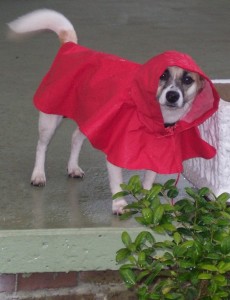 Hurricane Sandy is a reminder of just how important it is to heed the old Boy Scout motto: be prepared. We all think that it will never happen to us, but the truth of the matter is that natural and man-made disasters can strike anytime, anywhere.
Hurricane Sandy is a reminder of just how important it is to heed the old Boy Scout motto: be prepared. We all think that it will never happen to us, but the truth of the matter is that natural and man-made disasters can strike anytime, anywhere.
The best thing you can do to help ensure that your four-legged family members are safe during a time of crisis is to plan ahead. By assembling all the tools you and your animals will need to survive a prolonged period without electricity, cell or Internet communication, or easy access to food and clean water, you can help take some of the stress and anxiety out of coping with any unexpected disaster scenario.
One of the most important things in a disaster is access to clean water, especially for horses. Local creeks and streams are not drinkable during flooding. So what are your options should your usual sources of water suddenly become unsafe to drink?
InstaHot is a great propane tank attachment for heating large volumes of water and this can be done using creek water. Many wells rely on electricity, which means a hand pump option for horse owners is imperative. It’s also a great idea for anyone with a well.
Trough water can be treated with iodine or bleach if the treatment can evaporate before horses will drink the water. A gallon of snow melts into a cup or two of water, but keep in mind that melting it with fire uses a lot of fuel. In a hurricane, lashed down buckets and barrels will fill with gray water, for uses other than drinking. Many people fill bathtubs inside their home for the same purpose prior to losing electricity.
A second complication in Sandy — by no means unique this event — was the loss of connection to emergency services or news media. A hand cranked radio and a CB are both good options for staying in touch. In rural areas, Internet, phone, and water are all dependent on electricity. A generator must be operated outdoors because it burns gasoline. In a torrential downpour with gale force winds, that is not realistic and tending to it is not safe with branches and other debris flying about.
Here are a few other generic tips:
- Lit candles and pets do not mix.
- The same is true for heaters — they can be dangerous when tipped over.
- If you have an electric fence for your horses or other livestock, consider investing in a solar battery backup to keep animals contained and safe when the power goes out.
- It’s also good to have a list of phone numbers or radio channels that you can monitor for emergency services, as well as a list of people with access to backhoes or snow plows (for moving large debris to keep roads and doorways clear), and trailer services for moving livestock. And don’t forget a list of locations and numbers for emergency medical care for both people and pets.
- Consider assembling a pet emergency kit. Here are some items worth including
- Water containers your pet can drink from
- Picture of you with your pet for identification purposes
- Extra collar, harness or leash
- Portable containment (x pens or carriers, a sheet or tarp for shade)
- Clean up supplies
- Bandaging materials and medications (Tube socks and gauze pads)
- Copy of important health records (Vaccination and License numbers)
- Toy or comfort item to help your pet pass time away from home
- Emergency phone numbers for veterinarians or referral services and directions
- Maps — in an emergency GPS may not be available
For more information, visit FEMA’s website, and take a look at these columns from HSSP Director Didi Culp:
Disaster Preparedness and Pets (crate training)
